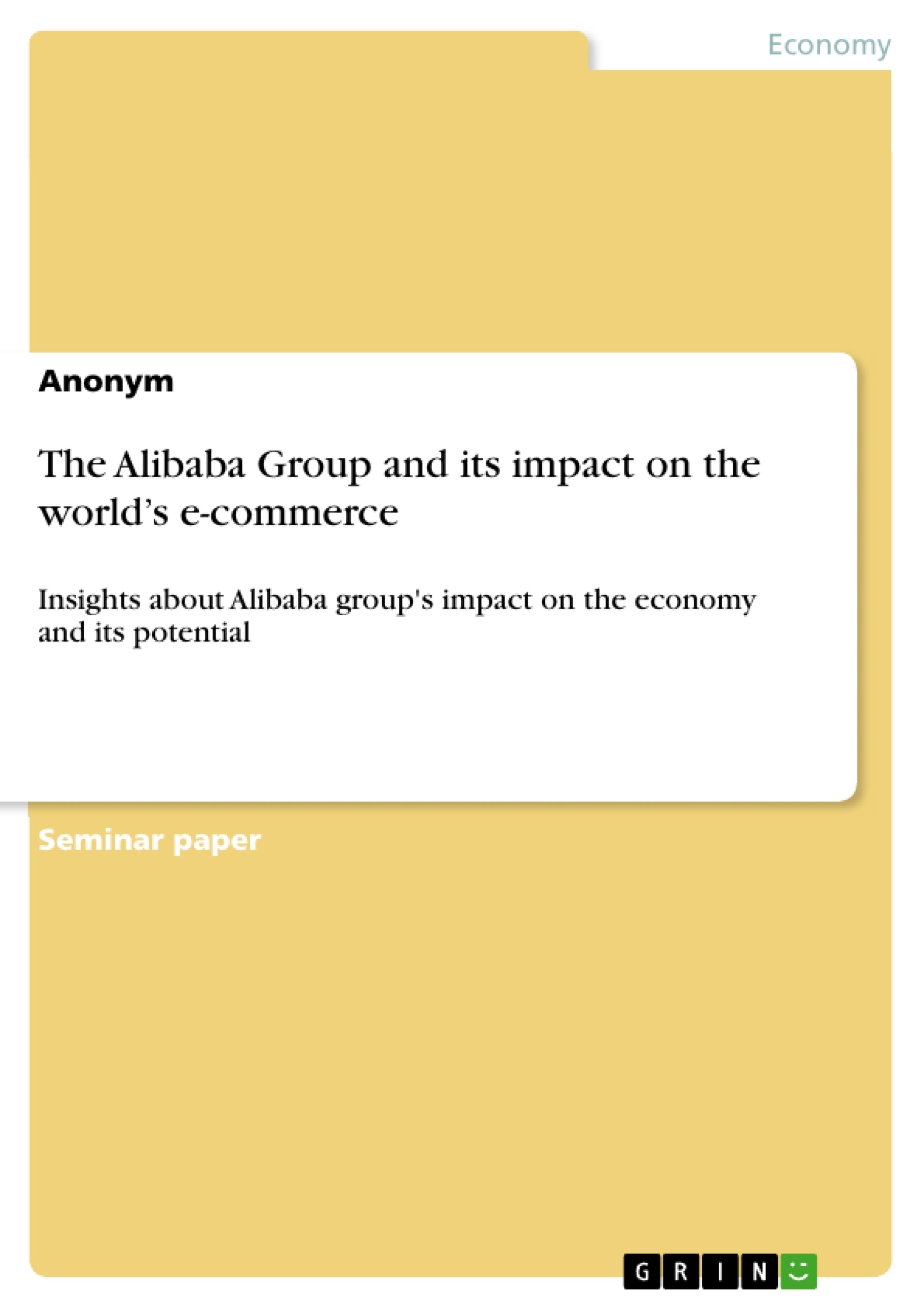Although, everybody has heard about the cyber giant “Alibaba”, the majority is not familiar with the company’s business therefore, this paper concentrates on giving some insights about the real impact of the Alibaba group. Firstly, the paper elucidates the company’s structure and its latest actions, especially the acquisitions in the ASEAN countries secondly, the paper analyses the meaning of its IPO, as well as the company’s impact on the overall economy, focusing especially on Alibaba’s strengths and weaknesses; finally, the paper concludes whether the news are over- or underestimating the power of Alibaba, it answers if Alibaba actually have an influence on us and what additional value proposition Alibaba has, aside from being a Chinese version of Amazon.
Inhaltsverzeichnis (Table of Contents)
- The foundation of the Alibaba Group
- The Alibaba Group's structure
- E-commerce market places
- E-commerce services
- Adjacent markets
- Alibaba's impact on the ASEAN region and its growth strategy
- Relevancy of Alibaba's Initial Public Offering (IPO)
- Impact on the overall economy
- Strengths and weaknesses
- Conclusion
Zielsetzung und Themenschwerpunkte (Objectives and Key Themes)
This paper aims to provide insights into the Alibaba Group's business model, impact, and overall significance in the global e-commerce landscape. It explores Alibaba's structure, its expansion strategies, the implications of its IPO, and its economic influence, ultimately assessing whether its current portrayal in the media is accurate.
- Alibaba's organizational structure and key business units
- Alibaba's growth strategy and expansion into international markets
- The impact of Alibaba's IPO on the company and the global economy
- Alibaba's competitive strengths and weaknesses
- Alibaba's overall contribution to the e-commerce sector
Zusammenfassung der Kapitel (Chapter Summaries)
The foundation of the Alibaba Group: This chapter details the founding of Alibaba in 1999 by Jack Ma and his partners in Hangzhou, China. It emphasizes the unique vision of Jack Ma, who focused on empowering small and medium-sized businesses through the platform, contrasting Alibaba's approach with those of other companies. The chapter highlights Alibaba's value-based company culture, emphasizing customer focus and employee commitment, and describes Ma's ambitious long-term vision for the company, aiming for longevity exceeding a century.
The structure of the Alibaba Group: This chapter delves into the complex structure of Alibaba, describing it as a conglomerate offering a vast array of internet services beyond its core e-commerce function. It explains Alibaba's key brands, including B2B marketplaces like Alibaba.com and 1688.com, C2C marketplace Taobao.com, B2C platform Tmall.com, and international platform AliExpress.com. The chapter also discusses Alibaba's involvement in areas such as cloud computing (Aliyun), mobile chatting (Laiwang), and personal finance (Yu'e Bao), illustrating its diversified business model and expansion beyond the traditional e-commerce space. The significance of Figure 1, illustrating the structure of Alibaba's e-commerce marketplaces, is crucial in understanding the interconnectedness of these platforms.
Schlüsselwörter (Keywords)
Alibaba Group, e-commerce, B2B, B2C, C2C, Taobao, Tmall, AliExpress, Alipay, Aliyun, Laiwang, Yu'e Bao, IPO, ASEAN, global economy, online marketplaces, cloud computing, mobile chat, personal finance, Jack Ma.
Alibaba Group: A Comprehensive Analysis - FAQ
What is the purpose of this document?
This document provides a comprehensive overview of the Alibaba Group, covering its founding, structure, impact on the global economy, particularly the ASEAN region, and the significance of its IPO. It analyzes Alibaba's business model, growth strategies, competitive landscape, and overall contribution to the e-commerce sector. The goal is to offer insights into Alibaba's current position and assess the accuracy of its media portrayal.
What key themes are explored in this analysis?
The analysis explores Alibaba's organizational structure and its various key business units; its growth strategies and international expansion; the impact of its IPO on the company and global economy; its competitive strengths and weaknesses; and its overall contribution to the e-commerce sector. It also examines the foundation of the company, its unique vision, and its value-based culture.
What are the main components of Alibaba's business structure?
Alibaba is presented as a conglomerate with diverse internet services, extending beyond its core e-commerce operations. Key components include B2B marketplaces (Alibaba.com and 1688.com), the C2C marketplace Taobao.com, the B2C platform Tmall.com, the international platform AliExpress.com, cloud computing (Aliyun), mobile chatting (Laiwang), and personal finance (Yu'e Bao).
What is the significance of Alibaba's Initial Public Offering (IPO)?
The analysis highlights the relevancy and impact of Alibaba's IPO on both the company itself and the global economy. This aspect is explored in detail to understand its broader consequences.
What is Alibaba's impact on the ASEAN region?
The document specifically examines Alibaba's impact and growth strategy within the ASEAN region, analyzing its expansion and influence in this key market.
What are Alibaba's key strengths and weaknesses?
The analysis identifies and discusses Alibaba's competitive strengths and weaknesses, providing a balanced perspective on its market position.
What is the overall conclusion of the analysis?
The conclusion summarizes the findings of the analysis, drawing together the various aspects explored to offer a final assessment of the Alibaba Group's significance and its accurate representation in the media.
What are the key chapters covered in this document?
The document includes chapters on the foundation of the Alibaba Group, its structure (including e-commerce marketplaces, services, and adjacent markets), its impact on the ASEAN region and growth strategy, the relevancy of its IPO, its impact on the overall economy, its strengths and weaknesses, and a concluding chapter.
What keywords are associated with this analysis?
Key terms associated with this analysis include Alibaba Group, e-commerce, B2B, B2C, C2C, Taobao, Tmall, AliExpress, Alipay, Aliyun, Laiwang, Yu'e Bao, IPO, ASEAN, global economy, online marketplaces, cloud computing, mobile chat, personal finance, and Jack Ma.
- Citation du texte
- Anonym (Auteur), 2014, The Alibaba Group and its impact on the world’s e-commerce, Munich, GRIN Verlag, https://www.grin.com/document/358818



